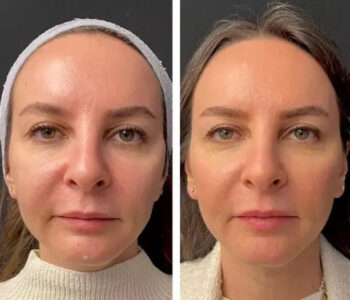 Health
Health
Complete Guide to Choosing the Right Optometrist for Your…
Selecting the ideal optometrist requires understanding their role, verifying credentials, assessing your needs, and evaluating practical factors like location and technology. For residents near Sydney’s medical hub, finding a trusted optometrist Macquarie St involves balancing expertise with accessibility. This guide details how to navigate qualifications, identify specialized care, and leverage modern diagnostics—ensuring your vision receives precise, personalized attention.
Understanding the Role of an Optometrist
Optometrists serve as primary eye care providers, focusing on vision correction, disease prevention, and early intervention. They conduct comprehensive exams to detect conditions like glaucoma or macular degeneration, prescribe corrective lenses, and manage issues like dry eye or digital strain. Unlike ophthalmologists (who perform surgery), optometrists emphasize ongoing monitoring and non-surgical treatments. Routine visits every two years (or annually for high-risk patients) enable early detection of problems, potentially preventing irreversible damage. For complex cases, they collaborate with ophthalmologists, ensuring seamless specialist referrals.
Qualifications and Experience
Australian optometrists must hold a Bachelor or Master of Optometry accredited by the Optometry Board of Australia (OBA) and maintain registration with AHPRA. Look for affiliations with Optometry Australia, which denotes adherence to continuing education. Experience matters profoundly: practitioners familiar with pediatric care, diabetic retinopathy, or myopia management offer nuanced insights. Verify credentials via AHPRA’s online register and prioritize clinics investing in advanced training—such as therapeutic endorsements for prescribing medications.
Identifying Your Eye Care Needs
Common Conditions & Specialized Care
Australians frequently contend with age-related issues (cataracts, presbyopia), refractive errors (myopia, astigmatism), and lifestyle-induced strain. Seek optometrists with niche expertise if you:
- Require pediatric care (e.g., amblyopia therapy using child-friendly techniques).
- Manage diabetes (needing retinal imaging and co-management with GPs).
- Need specialty lenses (orthokeratology for myopia control or scleral lenses for dry eye).
Urban Eye Health Challenges
City dwellers face unique stressors: prolonged screen exposure, pollution, and UV radiation. An optometrist Macquarie St addresses these through blue-light filtering coatings, photochromic lenses for indoor-outdoor transitions, and UV-protective eyewear. Urban clinics often feature extended hours for professionals, aligning with demanding schedules while mitigating digital eye strain—a growing concern with rising remote work.
Location and Accessibility
Proximity matters, but don’t sacrifice expertise for convenience. Macquarie Street’s central location offers advantages:
- Public transport access: Near train stations and bus hubs.
- Integrated healthcare: Collaboration with neighboring specialists (e.g., endocrinologists for diabetic patients).
- Parking facilities: Critical for elderly or disabled visitors.
If advanced diagnostics (e.g., OCT scans) aren’t locally available, consider traveling to clinics with cutting-edge tools. Balance commute time against the long-term value of thorough, technology-driven care.
Comparing Costs and Payment Options
Financial Transparency
Basic Medicare-covered eye tests are bulk-billed at many clinics, but complex assessments (e.g., OCT scans) may incur fees ($50–$150). Private health extras plans often subsidize lenses or contact fittings—confirm rebates with your insurer. Beware of “discount” promotions excluding essential services; upfront cost breakdowns prevent surprises.
Value Over Price
Prioritize practices explaining fee structures clearly. For example, a $90 comprehensive exam including retinal imaging offers better value than a $50 bulk-billed check without diagnostics.
Technology and Equipment
Modern optometry relies on precision tools:
- Optical Coherence Tomography (OCT): Detects retinal layers for conditions like glaucoma.
- Corneal topographers: Essential for specialty contact fittings.
- Digital retinal cameras: Track changes year-over-year.
Clinics near medical precincts (like Macquarie Street) often invest in such technology. Ask prospective practices about their equipment during initial inquiries—this signals commitment to cutting-edge care.
Reviews and Reputation
Trusted Feedback Sources
- Google Reviews: Focus on recurring themes (e.g., “thorough explanations,” “minimal wait times”).
- Local forums: Community groups share unbiased experiences.
- Professional referrals: GPs or pharmacists often recommend respected optometrists.
Avoid clinics with unresolved complaints about rushed appointments or opaque billing. Personal recommendations from friends with similar needs (e.g., children’s vision) carry significant weight.
Your First Visit: What to Expect
Pre-Appointment Prep
Bring past prescriptions, medical history, and insurance details. Discuss:
- Lens options (anti-glare, transitions).
- Frequency of follow-ups for existing conditions.
- Bulk-billing eligibility.
The Consultation
After reviewing your history, tests include:
- Visual acuity charts.
- Slit-lamp exams (cornea/iris health).
- Non-contact tonometry (eye pressure).
- Retinal imaging.
Results are explained immediately, with recommendations tailored to lifestyle (e.g., computer-friendly lenses).
Red Flags and Specialist Referrals
Warning Signs
- Rushed consultations: Exams under 20 minutes often miss details.
- Sales pressure: Unjustified upsells for premium lenses.
- Outdated equipment: Inability to perform retinal scans.
When to Switch Providers
Persistent discomfort, unaddressed concerns, or inadequate communication warrant a change. Reputable clinics facilitate record transfers seamlessly.
FAQs Addressed
Are online eye tests reliable?
No. They overlook critical diagnostics like intraocular pressure or retinal health.
Can I buy glasses online safely?
Risky for complex prescriptions. In-person fittings ensure correct pupillary distance and frame adjustments.
Final Checklist for Selection
- Credentials: Confirm AHPRA registration and OBA membership.
- Specialization: Match services to needs (e.g., pediatric care).
- Technology: Ensure OCT/digital imaging availability.
- Costs: Clarify Medicare/insurance coverage.
- Location: Weigh Macquarie Street’s accessibility against expertise.
- Feedback: Validate via reviews and personal referrals.
Conclusion
Choosing an optometrist Macquarie St merges clinical excellence with convenience. By prioritizing qualifications, transparent pricing, and advanced tools, you secure a partner dedicated to lifelong vision health. Whether managing age-related changes, screen fatigue, or complex conditions, the right practice delivers clarity—both in sight and communication. Invest in thorough research today to safeguard your vision tomorrow.









